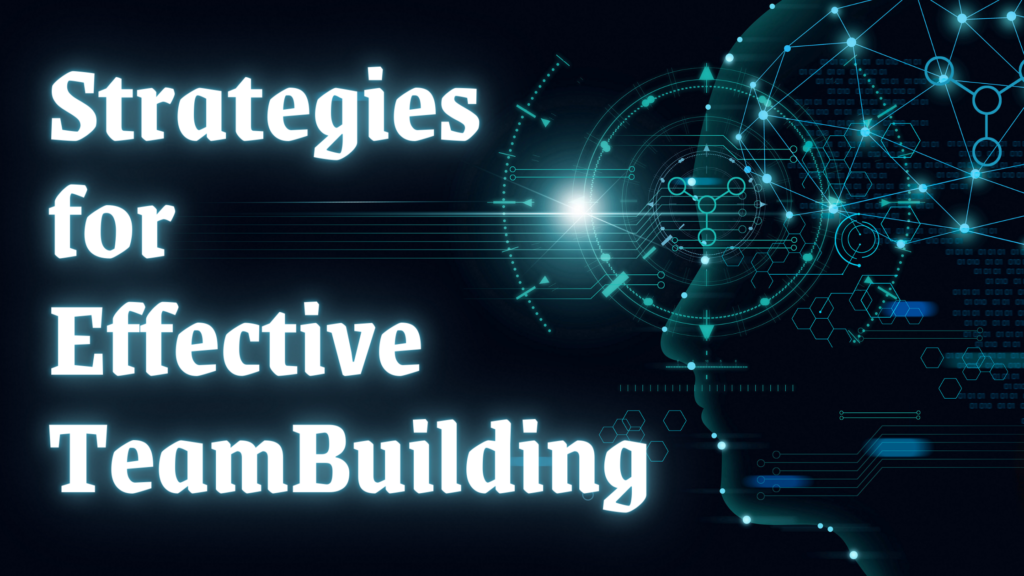
Leadership and Team Building: The Pillars of Organizational Success
In any organization, effective leadership and team building are crucial components that drive success and foster a positive work environment. Great leaders not only guide their teams towards achieving goals but also cultivate a culture of collaboration, trust, and mutual respect. This blog post delves into the key aspects of leadership and team building, offering insights and strategies to enhance these essential skills.
Understanding Leadership
1. Defining Leadership:
Leadership is the art of motivating and guiding individuals towards achieving a common goal. It involves setting a vision, inspiring others, and steering the team through challenges and changes. Effective leaders exhibit a blend of various qualities, including integrity, empathy, resilience, and the ability to communicate clearly.
2. Leadership Styles:
Different situations and team dynamics call for different leadership styles. Some of the most common styles include:
- Transformational Leadership: Focuses on inspiring and motivating the team to exceed expectations by creating a shared vision and fostering an environment of innovation.
- Transactional Leadership: Centers on structured tasks, rewards, and penalties to manage team performance and ensure goals are met.
- Servant Leadership: Prioritizes the needs of the team members, empowering them to develop and perform at their best by putting their welfare first.
- Situational Leadership: Adapts the leadership style based on the team’s maturity and competence level, providing the necessary support and direction as needed.
Essential Leadership Qualities

3. Emotional Intelligence:
Emotional intelligence (EQ) is the ability to understand and manage your own emotions, as well as recognize and influence the emotions of others. High EQ helps leaders build strong relationships, manage stress, and make informed decisions.
4. Communication:
Clear and effective communication is vital for leadership. Leaders must be able to convey their vision, provide constructive feedback, and listen actively to their team members. Open communication fosters transparency and trust within the team.
5. Decisiveness:
Leaders are often required to make tough decisions under pressure. Being decisive means analyzing available information, considering the potential impact, and making informed choices swiftly. Indecision can lead to missed opportunities and decreased team morale.
6. Integrity:
Integrity is the foundation of trust. Leaders with integrity are honest, ethical, and consistent in their actions and decisions. They lead by example, fostering a culture of accountability and reliability within the team.
Building Effective Teams
7. Creating a Shared Vision:
A shared vision aligns the team towards a common goal. Leaders should involve team members in the vision-setting process to ensure buy-in and commitment. A clear, compelling vision provides direction and motivates the team to work collaboratively towards achieving it.
8. Establishing Trust:
Trust is the cornerstone of any successful team. Leaders can build trust by being transparent, reliable, and supportive. Encouraging open communication, recognizing team members’ contributions, and addressing conflicts promptly also help in fostering trust.
9. Promoting Collaboration:
Collaboration leverages the diverse skills and perspectives of team members, leading to innovative solutions and improved outcomes. Leaders should create an environment that encourages teamwork, where members feel valued and empowered to share their ideas.
10. Developing Team Members:
Investing in the development of team members enhances their skills and boosts their confidence. Leaders should provide opportunities for professional growth through training, mentorship, and challenging assignments. Supporting their career aspirations fosters loyalty and engagement.
Strategies for Effective Team Building

11. Setting Clear Goals:
Clear, achievable goals provide direction and purpose. Leaders should define specific, measurable, attainable, relevant, and time-bound (SMART) goals, ensuring that each team member understands their role in achieving them.
12. Delegating Effectively:
Effective delegation involves assigning tasks based on team members’ strengths and expertise. Leaders should trust their team to execute tasks, provide the necessary resources and support, and avoid micromanaging. This empowers the team and promotes accountability.
13. Encouraging Diversity and Inclusion:
A diverse team brings varied perspectives and ideas, which can enhance problem-solving and innovation. Leaders should promote an inclusive culture where everyone feels respected and valued, regardless of their background or differences.
14. Conducting Regular Team Building Activities:
Team building activities strengthen relationships and improve collaboration. These can range from workshops and retreats to informal gatherings and team challenges. Such activities help in breaking down barriers, improving communication, and building camaraderie.
Overcoming Challenges in Leadership and Team Building
15. Managing Conflicts:
Conflicts are inevitable in any team. Effective leaders address conflicts promptly and constructively, facilitating open dialogue to understand different viewpoints and find mutually agreeable solutions. This prevents conflicts from escalating and harming team dynamics.
16. Navigating Change:
Change can be unsettling for teams. Leaders must communicate changes clearly, providing rationale and addressing concerns. Involving the team in the change process and offering support during transitions helps in maintaining morale and engagement.
17. Maintaining Work-Life Balance:
Overworked teams can lead to burnout and decreased productivity. Leaders should promote a healthy work-life balance by encouraging regular breaks, flexible working hours, and respecting personal time. A balanced team is more motivated and effective.
Conclusion
Effective leadership and team building are intertwined elements that contribute to the success and growth of any organization. By understanding and embodying key leadership qualities, setting a clear vision, and fostering a collaborative and inclusive team environment, leaders can drive their teams towards achieving remarkable results. Continuous learning, adaptability, and a genuine commitment to the well-being of team members are the hallmarks of exceptional leadership. As you refine your leadership skills and build strong teams, remember that the journey is ongoing, and the impact of your efforts will resonate far beyond the workplace.
